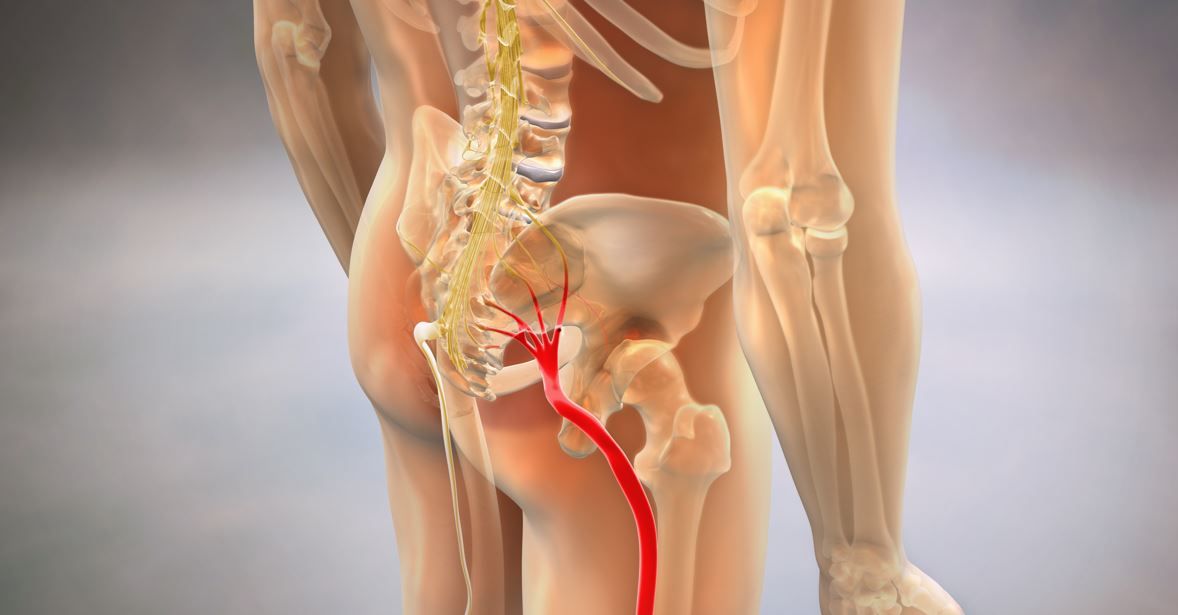Surgery May Be Best Option for Sciatica
A study published in the New England Journal of Medicine earlier this year of patients with sciatica lasting longer than four months due to lumbar disk herniation, finds that microdiskectomy was superior to nonsurgical care in controlling pain six months post-op.
(©FreshIdea,AdobeStock)

A study published in the New England Journal of Medicine earlier this year of patients with sciatica lasting longer than four months due to lumbar disk herniation, finds that microdiskectomy was superior to nonsurgical care in controlling pain six months post-op.
Sciatica caused by acute disk herniation of a lumbar disk is assumed to heal on its own within four months without surgical treatment in 90 percent of cases. But for patients with sciatica associated with more persistent symptoms lasting four months or longer, whether a surgical or nonsurgical approach is best, isn’t well known.
In this study, researchers led by Chris S. Bailey, M.D., of the London Health Sciences Center in Ontario, researchers conducted a single-center trial between 2010 and 2016 of 128 patients with lumbar disk herniation and sciatica that lasted between four and 12 months. The group was split in two: half were assigned to surgery and half were assigned to a nonsurgical method. All of the patients had lumbar disk herniation at L4–L5 or L5–S1.
Surgery was performed at three weeks on average. But of the 64 patients in the nonsurgical group, 22 underwent surgery 11 months after enrolling in the study.
THE RESULTS
On a scale of 1-10, the average leg pain level of all patients in the surgical group was 7.7 and eight in the nonsurgical group. The primary outcome of the leg pain intensity score at six months was 2.8 in the surgical group and 5.2 in the nonsurgical group on a scale of one to 10. And, secondary outcomes were based on the Oswestry Disability Index which measures back and leg pain, and quality-of-life scores at six weeks, three months, six months, and one year.
Nine patients had adverse events associated with surgery, including postoperative dural tear, one superficial wound infection, one nerve-root injury, and two instances of new-onset neuropathic pain. One patient underwent repeat surgery for recurrent disk herniation.
“The decision about whether to recommend diskectomy or nonsurgical treatment in this population is controversial because a longer duration of symptoms has been correlated with a poorer outcome associated with lumbar diskectomy in some studies. However, patients may prefer to avoid surgery if they think that nonsurgical treatment could be successful or if they anticipate a risk from surgery. We found that patients who underwent surgery for sciatica lasting 4 to 12 months caused by lumbar disk herniation had a greater reduction in pain at 6 months than those who received conservative treatment,” the authors wrote.
EDITORIAL
Writing in an editorial that accompanied the study, Andrew J. Schoenfeld, M.D., and James D. Kang, M.D., of Brigham and Women’s Hospital in Boston, wrote that the study did not account for other clinical factors that may have had an impact on surgical outcomes, such as the size of the disk herniation or the extent of nerve-root compression.
Also: In practice, patients often change the timing of the surgery or opt out altogether due to improvement in their condition. And, crossovers from the two groups (from surgery to nonsurgery and vice versa) may suggest an overestimation of the benefit of surgical intervention in patients with persistent sciatica.
They wrote: "It is encouraging that the trial reported by Bailey et al. shows that surgical intervention still results in clinically meaningful improvement in patients with persistent sciatica. However, the trial does not help clinicians determine which patients are most likely to benefit from immediate surgical intervention or the duration of nonoperative care that is acceptable before surgery is recommended."
________________
REFERENCE
Chris S. Bailey, Parham Rasoulinejad, David Taylor, et al. “Surgery versus Conservative Care for Persistent Sciatica Lasting 4 to 12 Months.”New England Journal of Medicine.March 19, 2020. DOI: 10.1056/NEJMoa1912658
J. Schoenfeld, James D. Kang, et al. “Decision Making for Treatment of Persistent Sciatica.”New England Journal of Medicine.March 19, 2020. DOI: 10.1056/NEJMe2000711